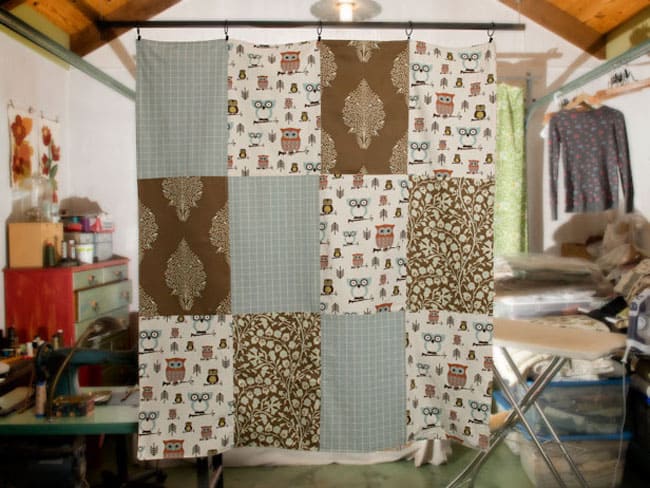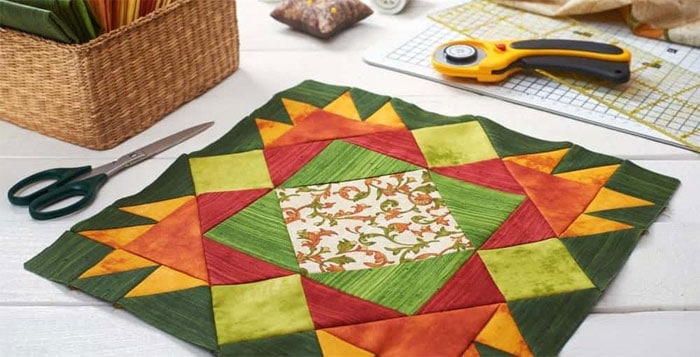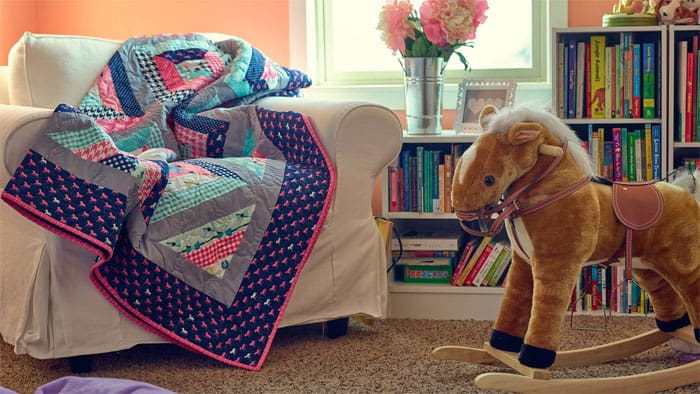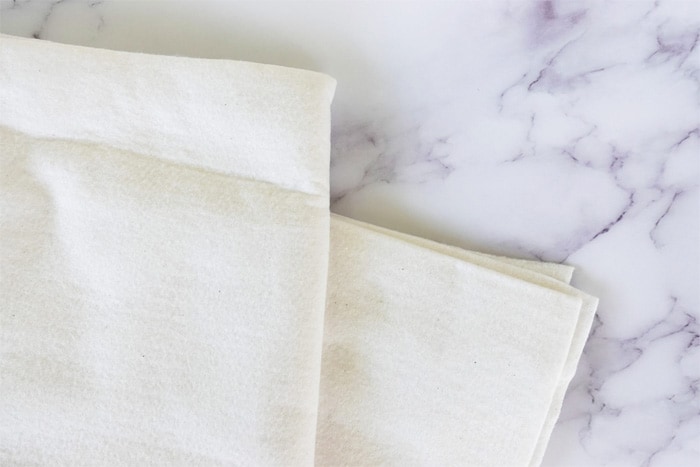Quilting, or making quilts for yourself or for a loved one, isn’t just a hobby these days. Our mothers and grandmothers, and our great-grandmothers before them, used to give away special homemade quilts to newlyweds and newborns.
It was an expression of love as well as a wonderful gift for someone starting a new life. These days, too, making a quilt and giving it to a loved one can be the most thoughtful gift ever.
How Do You Make a Quilt?

Making a quilt involves a lot of sewing and joining different pieces of fabrics together.
Generally, a quilt is a large project and may take up to a few weeks to complete. Quilts for newborns and children are easier to make, smaller and take less time to complete.
Quilts are a great way to show your creativity. Keeping the structure of the quilting simple, you can make them with any design you want to.
The classic quilt is made up of small and medium pieces of patterned fabrics arranged in blocks, but the design of the top can be anything or resemble anything you want it to be.
The right tools are extremely important in quilting. You should have all the tools ready for working before starting your quilt, which includes:
- The right fabrics for all the layers of the quilt
- A pair of scissors and fabric shears
- Rotary cutters
- Cutting mats
- Acrylic rulers
- Seam cutters
- Basic Sewing Machine
- Threads of the right colors
- Pins and clips
- Needles for hand hemming and machine sewing
What are the Important Parts of a Quilt?

A quilt basically have three layers or parts:
- the upper or the top part that has all the designs and the pattern,
- the batting which is the part in the middle and provides the insulation and the thickness of the quilt, and
- The backing that provides the sturdy base of the quilt.
Of course, you can experiment with the different layers of the quilt you are making, by choosing unique patterns and designs for the top part.
The backing and the batting can also be experimented with, depending on how thick, heavy or comfortable you want your finished quilt to be.
What is Batting?
Batting is the innermost layer of a quilt, placed in the middle between the top layer and the backing.
Batting can be of different types, weights, fabrics and materials, depending on the kind of quilt you want.
Just like the backing and the top layer, batting can also be of different types. Also known as wadding, we can categorize batting by their material, by their weight, by thickness or by warmth they provide inside the quilt.
What are the different types of Batting?

Based on the material they are made from, batting can be of five types:
1.Cotton Batting: This kind of batting is made from natural fiber and it is a natural batting. Cotton is one of the most common kinds of batting used because it is both soft and comfortable.
Put inside a quilt, cotton batting makes the whole thing lightweight and comfortable. Any batting that is made from 100% cotton is usually not more than ⅛” thick.
2. Polyester Batting: Batting made from polyester is thicker than cotton batting but at the same time, not heavier. This kind of batting is used in quilts for cribs, bedding, newborns and young children because they are comfortable without being heavy.
Even a very thick quilt made with polyester batting won’t be very heavy and can be perfect for young children to use.
A polyester batting with a thickness of 1” is only 10-ounce in weight and a batting with a ½” thickness is only 6-ounces in weight.
Polyester batting is a non-breathable batting. It holds its shape inside a quilt and doesn’t crease or fold. Polyester batting also resists mildew and mold, even when stored in a damp area for a long time.
3. Wool Batting: Batting made from wool is natural, thick and warm. Wool batting is also lightweight and lofty.
This is the kind of batting used in quilts made for winter or for extremely cold regions. Wool batting is resistant to creases and folds, and can hold its shape when sewn inside a quilt.
Batting made from wool can be used in both machine and hand quilting, and also if you want to use the batting by tying. Wool batting is also ½” thick.
4. Cotton/Poly Blend:
A blended batting of cotton and polyester usually means a mixture of 80% cotton and 20% polyester.
This type of batting is natural, comfortable and soft, but more lofty in shape. In short, a cotton/poly blend batting has the best features of both cotton and polyester.
5. Bamboo Batting:
Batting made from bamboo is actually a mixture of 80% organic cotton blend and 50% bamboo.
This makes bamboo batting both breathable and soft; this kind of batting is made by the bamboo being processed into a usable fiber that leaves very little waste and is a completely pollution-free method.
Bamboo batting is also ideal for quilting with your sewing machine and can be washed in a machine.
Based on the method of quilting, batting can be of further three types.
1.Fusible Batting
This kind of batting comes with a fusible web that you can use to baste all the layers together. This means, you need to apply heat for the batting to be pasted permanently to the backing and the top part of the quilt.
A regular household iron can be used to baste all the layers together, keeping the setting to “Wool”.
It doesn’t need each section of the quilt to be pressed for 3 to 4 seconds for the layers to be bonded together permanently.
Once the side that has been pressed is cool, the same process needs to be repeated on the other side.
2. Bonded Batting
These kinds of batting come with a light adhesive on both sides, just enough to keep the backing and the top part pasted together temporarily.
Because of this adhesive, the layers won’t shift or move when they are sewn together.
3. Needle Punch Batting
This kind of batting comes mechanically felted together by being punched with a lot of needles.
A Needle Punch Batting is not only denser, but firmer, and they are most commonly used in blankets, durable and permanent quilts and apparels.
Besides, batting made from polyester are the least expensive ones, while the ones made from cotton and wool are the most expensive ones.
Also, wool is the warmest batting. Any quilt made with wool batting can be perfect for winter seasons. Both cotton and wool batting are more breathable compared to polyester.
It is very important that you know all about the different types of batting before chasing one for making a quilt, regardless of what you are making and for which kind of use.

